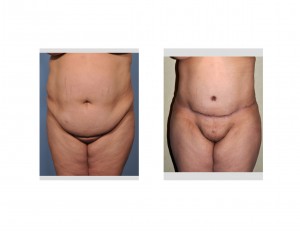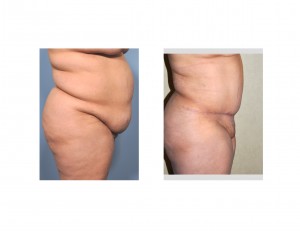
Tummy tucks do, however, have numerous minor early postoperative issues or complications. I hesitate to call them ‘complications’ as these minor wound healing issues rarely necessitate a return to the operating room for correction. The single greatest complication in tummy tuck surgery is that of seroma. This fluid collection which usually appears within weeks of the surgery can develop in ‘drainless’ tummy tucks as well as those that even use a drain.
In the April 2014 issue of the journal Plastic and Reconstructive Surgery, a paper was published entitled ‘Natural Evolution of Seroma in Abdominoplasty’. In this clinical study the aim was to evaluate when seromas after tummy tucks occur and how they progress. Using twenty one (21) female tummy tuck patients, abdominal ultrasound was performed in five abdominal wall regions at five different time points after surgery at four, eleven, eighteen, twenty-five and thirty-two days. Their findings shows that the incidence of seroma was roughy 5% percent on postoperative day 4, 38% percent on day 11, 33% percent on day 18, 24% percent on day 25, and 19 % on day 32. The left iliac fossa region had the highest volume of fluid collection on postoperative day 4, as did both the right iliac fossa and left iliac fossa regions on postoperative day 11. At other time points, the relative volume of fluid collection was significantly higher in the right iliac fossa region.

The location of the seromas is not always in the midline as one would suspect since this is the ‘bottom of the well’ so to speak. They often develop/persist more to the sides near the hips which is why they can be sometimes problematic to aspirate and why it is helpful to turn the patient on one side or the other to successfully tap them.
Dr. Barry Eppley
Indianapolis, Indiana


